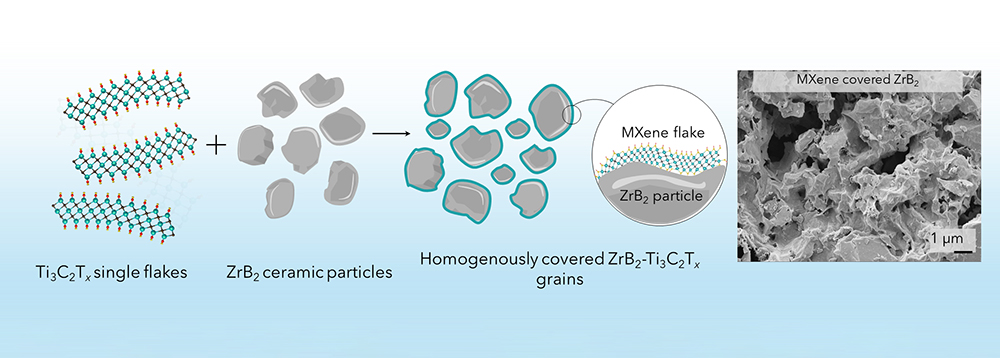
[Image above] Credit: NIST
Acoustic imaging technique could reveal invisible cracks in bridges or other infrastructure
A new acoustic imaging concept could make it easier for engineers to find dangerous defects in bridges or airplane wings. The system is the first that can locate so-called acoustic nonlinearities—places where multiple sound waves don’t add up as one might expect—in a simple and practical manner.
How to make stronger, “greener” cement
Concrete is the world’s most-used construction material, and a leading contributor to global warming. Now a new study suggests a way in which those emissions could be reduced by more than half—and the result would be a stronger, more durable material.
Taking thin films to the extreme
Applying a well-known optical phenomenon called thin-film interference, a group of researchers at Harvard University has demonstrated the ability to “paint” ultra-thin coatings onto a rough surface—work that holds promise for making flexible electronic devices, advanced solar cells, and aircraft with extremely lightweight decorative logos.
DIY printing puts paper-thin and touch-sensitive displays on various materials
What if you could integrate custom paper-thin displays into cards and other materials that could be printed at home and could even react to touch? Scientists at Embodied Interaction have now made it possible with simple processes for DIY devices.
Rediscovered ceramic has potential in hypersonic flight
Researchers at Imperial College London are researching structural ceramics in a range of areas, including materials that could be used in the aerospace industry. Ph.D. student Omar Cedillos has shown that UHTC hafnium carbide can withstand temperatures of more than 4050°C, rather than the previously reported 3950°C.
Metal made like plastic may have big impact
Researchers at NASA’s Jet Propulsion Laboratory, Brigham Young University, and the California Institute of Technology describe a new methodology for creating complex, low-cost complaint mechanisms using a combination of novel materials and manufacturing techniques. They demonstrate that materials called “bulk metallic glasses” have highly desirable properties for these mechanisms.
Author
April Gocha
CTT Categories
- Construction
- Electronics
- Material Innovations
- Nanomaterials
- Weekly Column: “Other materials”

